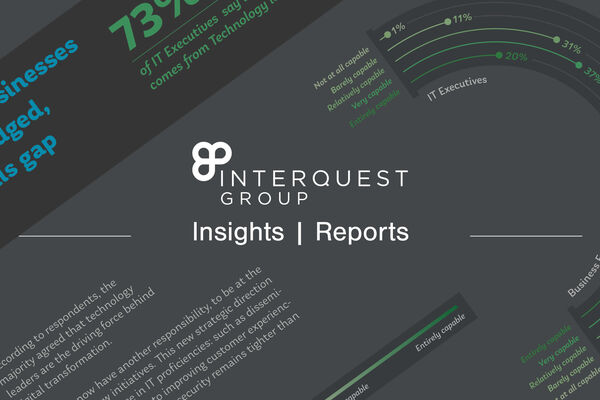Top 7 supply chain technology trends
Pubished 18th February 2020
Manufacturers are placing trust in emerging technology to optimise the way they create products and deliver them to customers. While technology is no substitute for good practice, with the right approach, it can bring many opportunities. In a highly competitive market where 2,760 parcels are shipped every second, supply chain leaders will be keeping their eyes on the top technology trends.
Artificial Intelligence (AI)
In Supply Chain Management (SCM), cognitive automation can be scaled to process terabytes or even petabytes of data.

As personalised products are becoming the norm, product portfolios are growing. AI and machine learning (ML) algorithms could produce recommendations to improve speed and cost-efficiency when dealing with thousands of SKUs. According to a survey by McKinsey, 61% of executives reported decreased costs and 53% reported increased revenues as a direct result of introducing AI into their supply chains.
Prescriptive analytics
Prescriptive analytics is an advanced process to find out what should be done in a certain situation. It uses a combination of predictive analytics and optimisation logic.

This form of analytics can produce recommendations to best allocate resources to achieve business objectives. Gartner forecasts that in 2020, 35% of companies will use some form of prescriptive analytics. This technology can provide supply chain managers with answers to, for example, location-specific shipment strategies to decide whether a new factory is needed when and where.
IoT
Third-party logistics (3PL) has been one of the most popular options for moving products from one location to another. IoT devices are now changing how this process operates.

Asset tracking tech such as RFID tags can allow companies to track items on their journey through IoT using long-range networks or Low Power Wide Area Networks (LPWANs). Bluetooth RFID tags can also be used for warehouse/store inventory management. Instead of manually scanning barcodes, identification can be accurately performed in bulk. Near-field communication (NFC) tags allow workers to use their mobile devices instead of scanners. While the cost of implementing RFID can be quite high, the trade-offs include reduced operating costs and increased speed of locating products.
Chatbots
Chatbots in supply chain management assist in communicating data that is collected from multiple sources to customers and employees.

For customers, chatbots can handle transactions, provide answers to common questions and send notifications about the delivery status and location without the need for human intervention. For employees, a chatbot can assist in inventory management. Rather than browsing through the database, a chatbot could instead locate a specific package in the warehouse. To manage fleet schedules, a chatbot can quickly source vehicles closer to a pickup point and identify idle automobiles.
Process automation
It’s easy for an enterprise to get overwhelmed in the volume of data from suppliers and customers in various locations.

In manual processing, employees will be under pressure to carry out processing data quickly and error-free. Automation can help speed up this process by linking multiple software, systems and tools to improve data validity. This enables supply chain stakeholders to scale up operations and quickly adapt to demand. Implementing automation is not a quick or simple process, it can create significant project and operational overheads if not properly integrated.
Immersive tech
Augmented reality (AR) can help tackle challenges in the day-to-day operation of warehousing and logistics.

Smart glasses can display information to help workers carry out their tasks. For instance, to show where the next item is, how to navigate the facility and how to repair or install equipment - great for training! Virtual reality (VR) allows for enhanced collaboration between product engineers, architects and customers to evaluate designs on the spot. Visualising data on a 3D scale can assist in complex decision making, enabling companies to see the impact of certain operations or decisions.
Blockchain
Large enterprises can have a lot of elements in their supply chain networks, creating transparency challenges in tracking every record.

A blockchain’s shared IT infrastructure could streamline workflows for all parties no matter the size of the network. It can drive down record-keeping costs and help verify that a product was sourced accurately and ethically.
The hardest part is understanding which technologies will create an impact, some may be useful, some may only work in certain niches. At the end of the day, knowing where technology can add value in different areas of the supply chain can minimise risk when leaders choose to invest.

